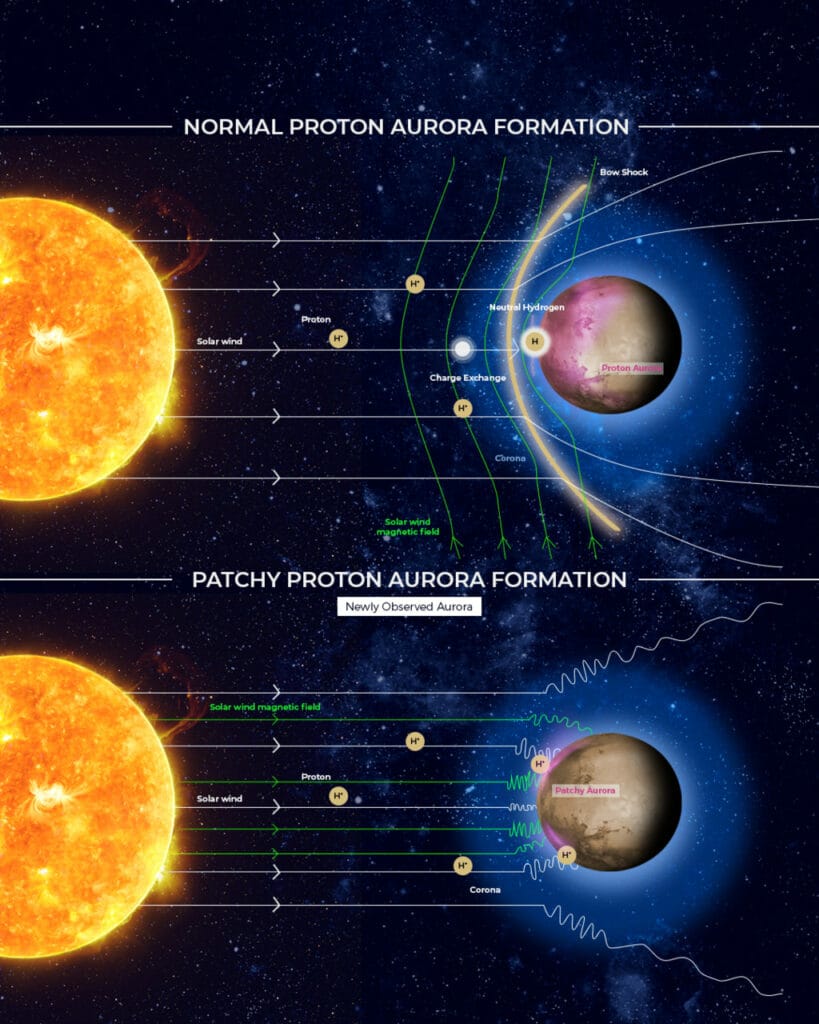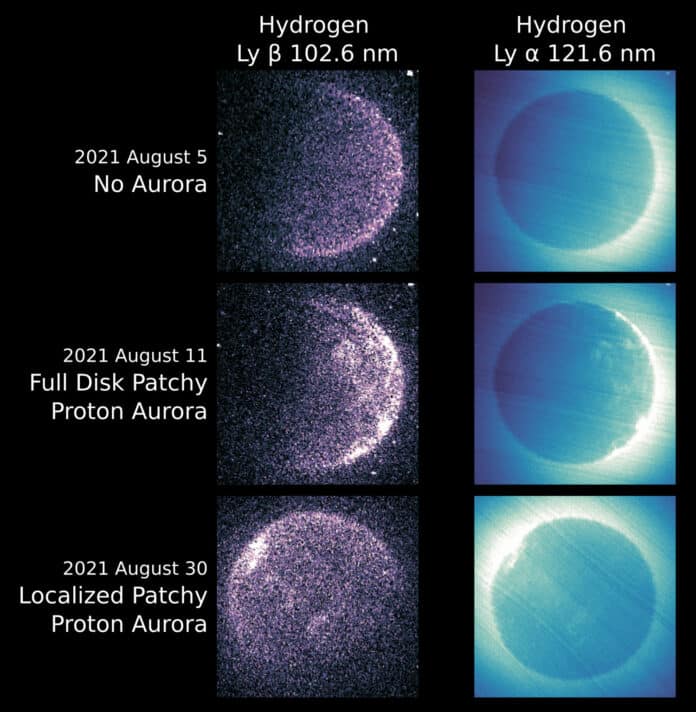The combined observations made by NASA’s MAVEN (Mars Atmosphere and Volatile Evolution) mission and the United Arab Emirates’ Emirates Mars Mission (EMM) revealed dynamic proton aurora events at Mars. This opens up a new avenue for understanding the Martian atmosphere.
In the latest research, EMM found fine-scale structures in the proton aurora that encompassed the entire dayside of Mars. A type of Martian aurora called a proton aurora was found by MAVEN in 2018; it forms when the solar wind, which is made up of charged particles from the Sun, interacts with the upper atmosphere.
These aurorae are smooth and uniformly dispersed across the hemisphere, according to typical proton aurora observations made by MAVEN and the ESA’s Mars Express mission. EMM, on the other hand, observed what looked to be a highly dynamic and varied proton aurora. When the charged particles from Mars may flow directly into the atmosphere and glow as they slow down, this is how the “patchy proton aurora” is created.
Mike Chaffin, a MAVEN and EMM scientist based at the Laboratory for Atmospheric and Space Physics at the University of Colorado Boulder and lead author of the study, said, “EMM’s observations suggested that the aurora was so widespread and disorganized that the plasma environment around Mars must have been truly disturbed, to the point that the solar wind was directly impacting the upper atmosphere wherever we observed auroral emission.”

“By combining EMM auroral observations with MAVEN measurements of the auroral plasma environment, we can confirm this hypothesis and determine that what we were seeing was essentially a map of where the solar wind was raining down onto the planet.”
“Normally, it is difficult for the solar wind to reach Mars’ upper atmosphere because it is redirected by the bow shock and magnetic fields surrounding the planet. The patchy proton aurora observations are a window into rare circumstances during which the Mars-solar wind interaction is chaotic.”
“The full impact of these conditions on the Martian atmosphere is unknown, but EMM and MAVEN observations will play a key role in understanding these enigmatic events.”
The factors driving the patchy proton aurora have been identified thanks to the data exchange between MAVEN and EMM. The Emirates Mars Ultraviolet Spectrograph (EMUS) instrument, carried by EMM, monitors the upper atmosphere and exosphere of the Red Planet in search of variations in atmospheric composition and atmospheric escape to space.
MAVEN Principal Investigator Shannon Curry of UC Berkeley’s Space Sciences Laboratory said, “EMM’s global observations of the upper atmosphere provide a unique perspective on a region critical to MAVEN science. These simultaneous observations probe the fundamental physics of atmospheric dynamics and evolution and highlight the benefits of international scientific collaboration.”
Journal Reference:
- Michael S. Chaffin et al. Patchy Proton Aurora at Mars: A Global View of Solar Wind Precipitation Across the Martian Dayside From EMM/EMUS. Geophysical Research Letters. DOI: 10.1029/2022GL099881
